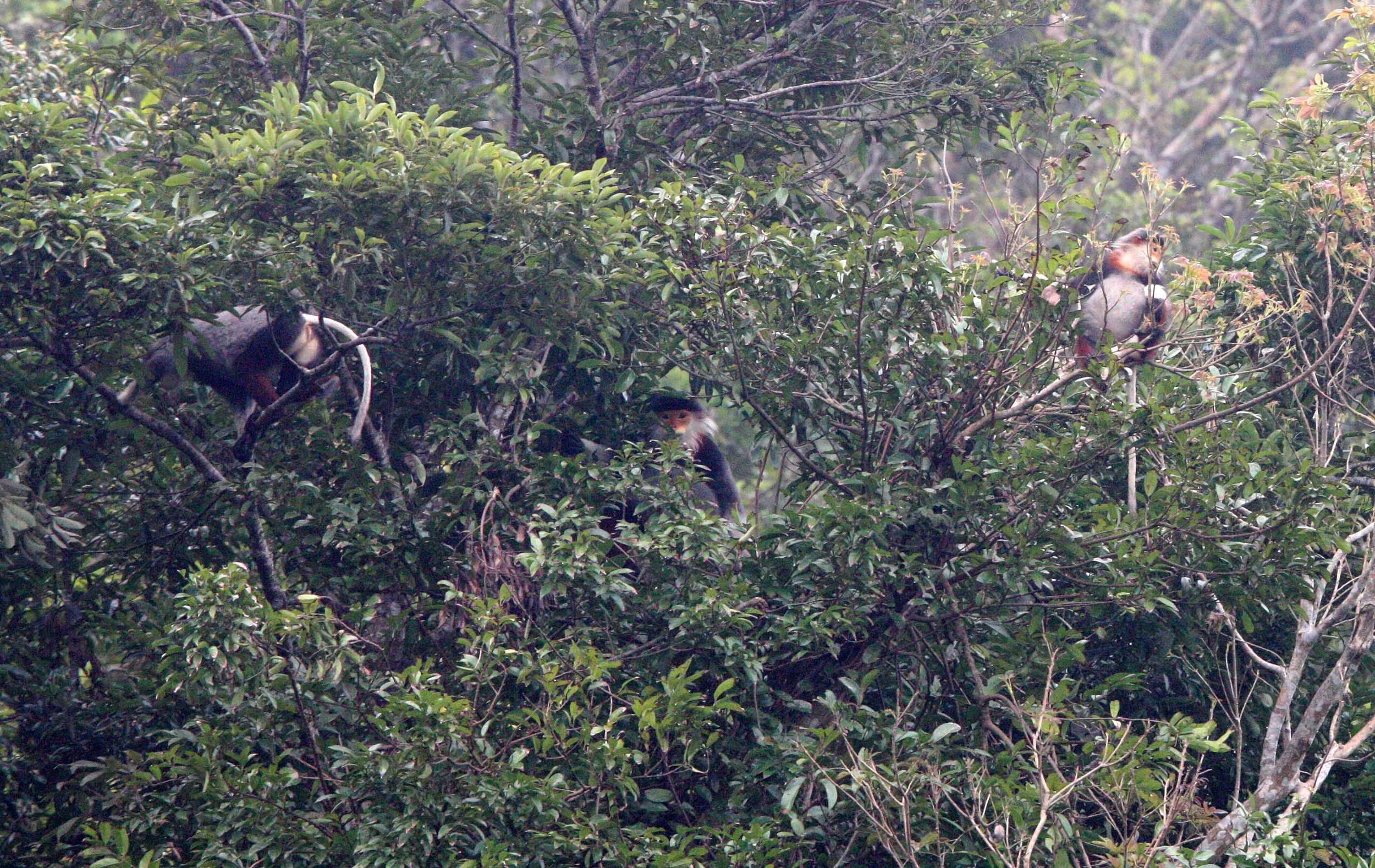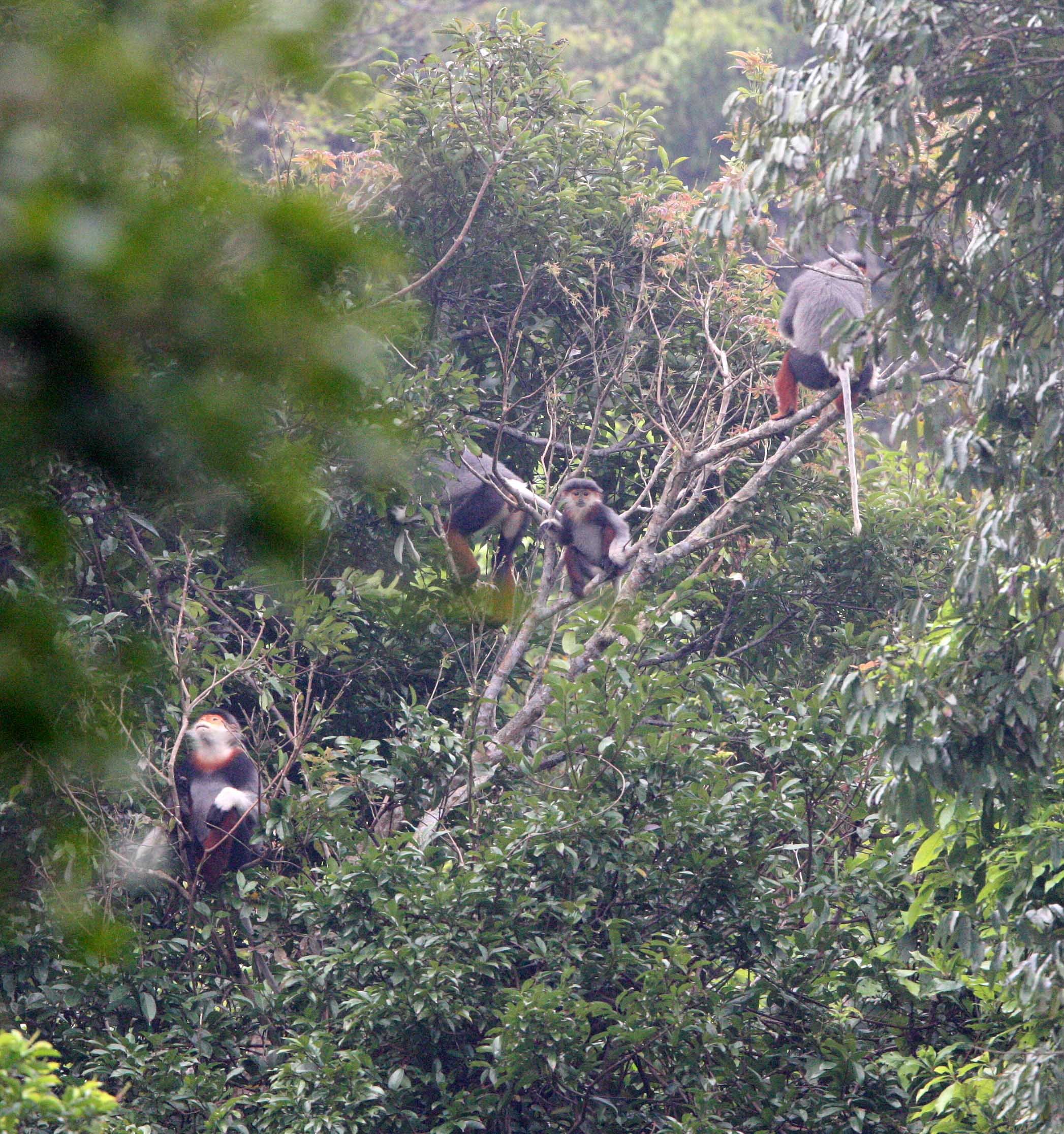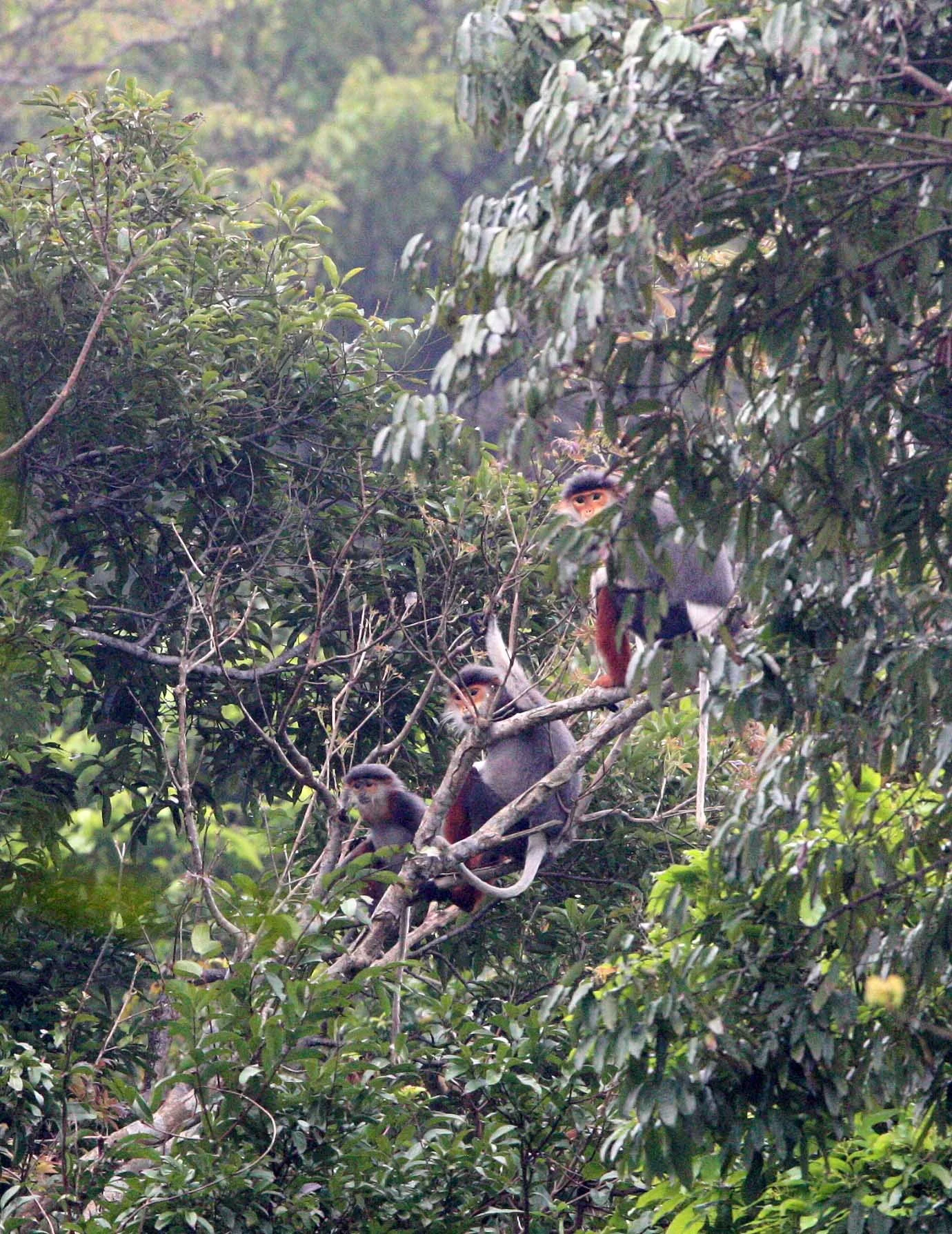
Red-shanked Douc
The Red-shanked Douc (Pygathrix nemaeus) is an arboreal and diurnal Old World monkey belonging to the Colobinae subfamily. They are endemic to Laos, Vietnam and Cambodia. They are known for their bright colors and express exhibit sexual dimorphism through their body size. The species have been declared critically endangered by the International Union for Conservation of Nature, with the main threats being from hunting, habitat loss and pet trade. They are one of three species in the genus Pygathrix, the other two being the black-shanked (P. nigripes) and gray-shanked (P. cinerea) doucs.
Red-shanked doucs live in fission-fusion, multilevel societies that have a mean of 18 individuals per band. They are folivorous and consume mainly Acacia pruinescens, Ficus racemosa, Millettia nigrescens, Zanthoxylum avicennae and Castanopsis ceratacantha. Their four-chambered stomachs that allow for bacterial fermentation help them with their high-fiber diet.
The red-shanked douc is native to Indochina; Vietnam, southern Laos and possibly northeastern Cambodia, east of the Mekong river. Before 1967, the douc was completely unstudied.[citation needed] It is the only douc species that inhabits all three countries of Indochina. In Laos, red-shanked doucs occur from the southern Nam Ghong Provincial Protected Area to the central-north part of the country. Laos is believed to have the largest population of red-shanked doucs, with Nakai-Nam Theun National Protected Area in central Laos having the most individuals of approximately 4,420 groups, followed by the Hin Namno National Protected Area. In Vietnam, the species lives between Nghe An and Gia Lai provinces, from 18°29'N to 14°21'N. The Son Tra Nature Reserve in central Vietnam holds the greatest Vietnamese population with approximately 700–1300 individuals. The Phong Nha – Kẻ Bàng National Park is also an important Vietnamese site for the species.
There was one observation of the red-shanked doucs in Cambodia by Rawson and Ross in 2008 in the Ratanakiri Province at the border of Vietnam. There was a report of a red-shanked douc specimen that was given to the Staatliches Museum by the Dresden Zoological Garden who had said that it originated in Hainan, China but the zoo records no longer exist so it remains uncertain.
Red-shanked doucs are found in evergreen, semi-evergreen and occasionally limestone forests, up to 1,600 metres (5,200 ft) in elevation. They are arboreal and spend most of their time in the forest canopy, including to sleep. They occasionally get on the ground to drink water or eat dirt that contains minerals.[citation needed] According to an ecological niche model, red-shanked doucs can live between approximately 14°N to 21°N. Their home range is approximately 36 hectares (89 acres) and they have a core area of 8 hectares (20 acres), with a smaller range in the dry season of 24 hectares (59 acres) and a larger range in the wet season of 33 hectares (82 acres).[clarification needed] There are weak correlations between precipitation, temperature, and diet and home range but not enough to draw conclusions from them.


































































































































































































































































































































































































































































































































































































































































All images below are from 2011















































































































